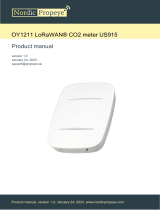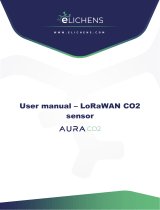Operating manual ECO series
ElektronikSystem i Umeå AB Tvistevägen 48, 90736 Umeå, Sweden
E-mail: support@elsys.se ǀ Web: www.elsys.se
Contents
1. Description ................................................................................................................1
1.1 Dimensions (mm) ..........................................................................................1
1.2 Label..................................................................................................................2
1.3 Main features of the ECO series ..................................................................3
2. Mounting guidelines ................................................................................................4
3. Installation .................................................................................................................5
4. Service and maintenance ........................................................................................5
5. Sensor configuration ................................................................................................6
5.1 NFC configuration ...........................................................................................6
5.2 Over the air configuration ..............................................................................7
5.3 Application parameters ..................................................................................7
6. Sensor behavior ........................................................................................................8
6.1 Sensor startup .................................................................................................8
6.2 Energy storage ................................................................................................8
6.3 Sampling mode / Periodic measurement....................................................8
6.4 Scheduled transmission .................................................................................8
6.5 LED indication .................................................................................................9
7. Internal sensors ..................................................................................................... 10
7.1 Temperature.................................................................................................. 11
7.2 Humidity......................................................................................................... 11
7.3 Light ............................................................................................................... 12
7.4 CO2 ................................................................................................................ 12
8. Device specifications ............................................................................................ 13


























